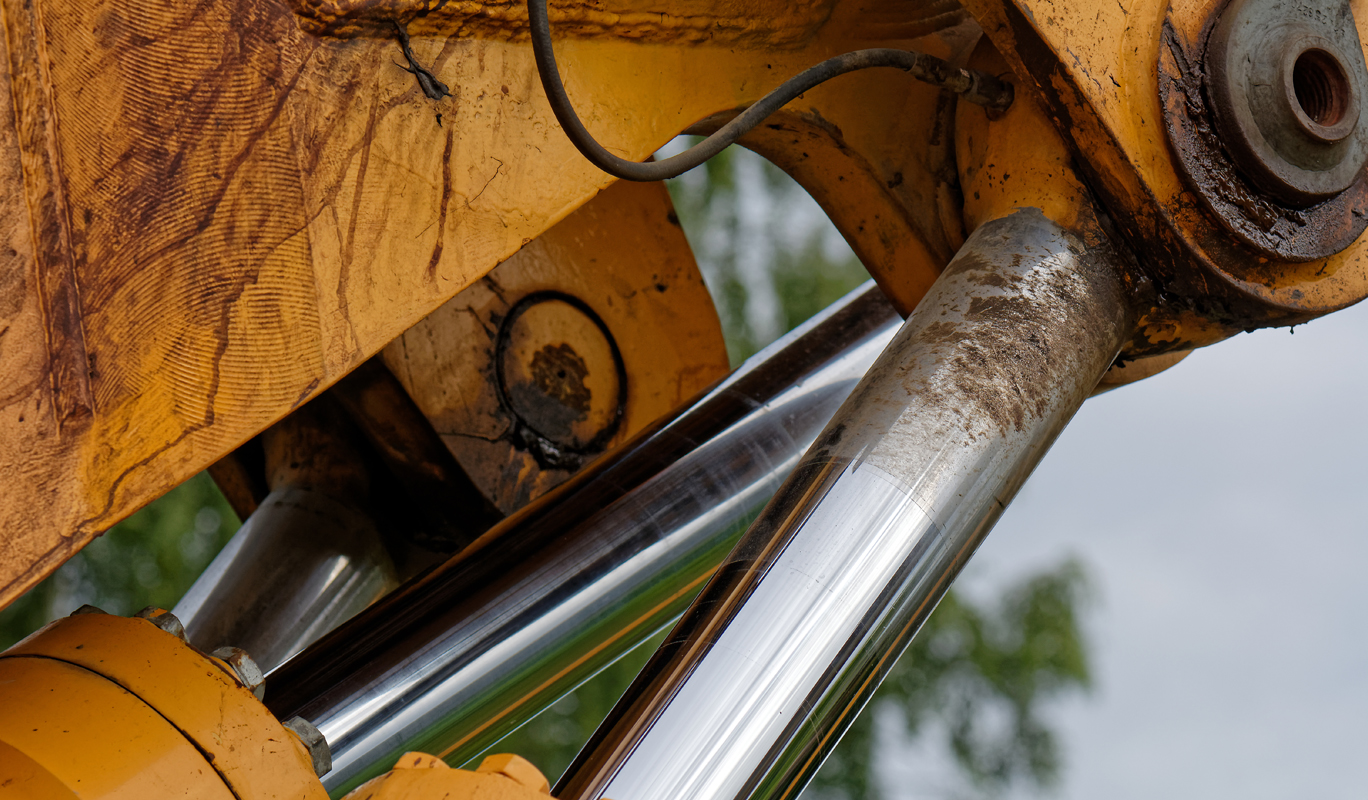
Hydraulic & pneumatic cylinders and parts
Somac provides hydraulic cylinders, with single or telescopic rods, in many configurations to meet any industrial application where loads need to be lifted, pushed, pulled, bent or clamped.
We also offer a customized manufacturing service to address specific client requirements and different industrial environments, including cylinders with special sizing, strength, stroke and functions.
Historically recognized as a repairer of hydraulic and pneumatic cylinders for construction equipment, we have further diversified our business over the years. Today, we also supply the agricultural and port sectors, as well as industrial handling companies and those specializing in the environment and eco-industry.

Let Somac repair your hydraulic cylinder
Drawing on our experience and in-depth knowledge of hydraulic and pneumatic cylinders, we can repair any type of cylinder: single-acting, double-acting, brake and pneumatic. Moreover, we also have an impressive array of new hydraulic cylinders for sale.
Highly exposed parts
Hydraulic cylinders are highly stressed: they have to support very heavy loads and make repetitive movements over long cycles. As a result, cylinders are high-risk parts that can fail at any time.
Main issues associated with hydraulic cylinder failure
Our repair shop has the know-how and tools needed to fix the primary issues associated with hydraulic cylinder failure: hydraulic fluid leakage (internal or external), bent hydraulic cylinder rod, damaged hydraulic hose. Depending on the nature of the problem, we can dismantle and recondition the defective components, or replace them completely.
Disassembly, inspection and repair steps
Step 1: Disassembly
The right equipment and stringent procedures are key to a high-quality repair.
The repair begins with the meticulous disassembly of each hydraulic cylinder, no matter its size. Cylinders must be properly prepared and secured. High-quality equipment is needed to not only handle large cylinders, but also to ensure that the disassembly process is adequately controlled. In addition to increasing the cost of the repair, damage resulting from disassembly can make it more difficult to diagnose the real cause of hydraulic cylinder failure.
Step 2: Inspection and assessment
A highly experienced technician examines the defective cylinder for signs such as fractured, glazed or swollen seals, asymmetrically worn piston rods, swollen cylinder tubes or cracked welds. This expert also measures all hydraulic cylinder parts with highly accurate digital and manual devices to assess cylinder condition.
Step 3: Spare parts selection and procurement
Any parts that exceed tolerances for the cylinder type or manufacturer’s specifications will be sourced or machined in our cutting-edge workshops. We maintain appropriate stock levels of cylinder components in our warehouses. What’s more, we enjoy excellent OEM relationships and source directly from our local distribution partners.
Step 4: Machining, welding and reconditioning
Somac has milling machines as well as lathes, large-scale drilling machines and other devices capable of fabricating and restoring all components, considerably reducing costs and turnaround times. Meticulous repair procedures and quality standards must be observed at all times to ensure that every reconditioned component meets the manufacturer’s specifications and design tolerances.
Step 5: Hydraulic cylinder rod restoration
Piston rods are restored to original design specifications through advanced surface engineering processes, including industrial hard chrome plating.
To help ensure rapid repair, Somac works with external partners who operate fully stocked industrial hard chromium plating facilities that can handle components of any size. Their staff have decades of experience and are very familiar with the science of hard chrome plating, which is a highly technical process requiring exceptional skill at every step.
Step 6: Reassembly
Our experienced technicians assemble hundreds of cylinders every year, adhering to strict assembly procedures. They use cranes and benches to reassemble each reconditioned cylinder, following the same rigorous procedures and using the same high-quality equipment to ensure correct installation of the parts. It’s important to avoid damage at this step, which can severely hinder performance and lead to premature wear and failure.
Step 7: Testing
Testing is indispensable to ensure that the cylinder operates to the required specifications. We test all cylinders on site before delivering them to the customer.
Step 8: Painting and finishing
At the client’s request, the final step in the process is to give the repaired cylinder a new coat of tough industrial paint. Once finished, the cylinder has completed its restoration cycle.